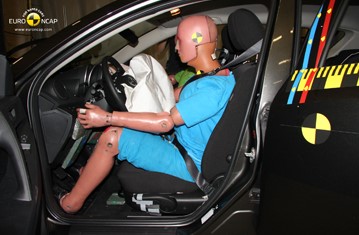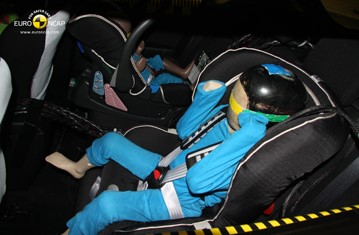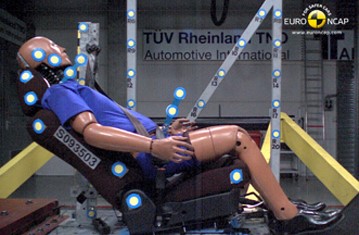Find more information in the General Comments section of the assessment
Find more information in the Rating Validity tab of the assessment
- See More
- See More
- See More
- See More
- Good
- Adequate
- Marginal
- Weak
- Poor
 Passenger
Passenger
 Driver
Driver
 Front Seat
Front Seat
 Car
Car
 Pole
Pole
- Good
- Adequate
- Marginal
- Weak
- Poor


Passenger
outboard
center
Fitted to the vehicle as standard
Not fitted to the test vehicle but available as option
Not Available
--childOccupantCommentEN--
- Good
- Adequate
- Marginal
- Weak
- Poor

Head Impact 10.2 Pts
Pelvis Impact 2.0 Pts
Leg Impact 6.0 Pts
The bumper scored maximum points for its protection of pedestrians' legs. However, in those areas most likely to be struck by an adult's head, the bonnet provided poor protection and scored no points.
- Good
- Adequate
- Marginal
- Weak
- Poor
| System Name | ESP | |
| Performance | ||
| Applies To | Front seats | ||
| Warning | Driver Seat | Front Passenger(s) | Rear Passenger(s) |
| Visual | |||
| Audible | |||
|
|||
Electronic Stability Control is standard equipment on the Mazda 3, as is a seatbelt reminder system for the driver and front passenger seats.
- Specifications
- Safety Equipment
- Videos
- Advanced Rewards
- Rating Validity
Specifications
Tested Model Mazda 3 1.6 'Touring', LHD
Body Type - 5 door hatchback
Year Of Publication 2009
Kerb Weight 1257kg
VIN From Which Rating Applies - from JMZBL14Z201124005
Class Small Family Car
Safety Equipment
Note: Other equipment may be available on the vehicle but was not considered in the test year.
Fitted to the vehicle as standard
Fitted to the vehicle as option
Not fitted to the test vehicle but available as option
Not Available
Not Applicable
Videos
Advanced Rewards
Rating Validity


Find more information in the General Comments section of the assessment
 Share
Share










The passenger compartment remained stable in the frontal impact, the windscreen pillar moving rearward by only 2mm. The car scored maximum points for its protection of the driver dummy. Protection of the passenger was rated as adequate for the chest and good for other body regions. Mazda were able to demonstrate that the knees and femurs of occupants of different sizes, and of those sat in different seating positions, would be similarly well protected. In the side barrier impact, dummy readings were good in all body regions. However, the curtain airbag did not deploy fully at the rear, leaving a space where an occupant's head might contact the C pillar. This was penalised by Euro NCAP and is reflected in a lowered score for the driver's head protection. The same phenomenon occurred in the more severe side pole test and that test was similarly penalised. In the pole test, dummy readings in the chest indicated poor protection. The seat and head restraint provided marginal protection against whiplash injuries in a rear impact.